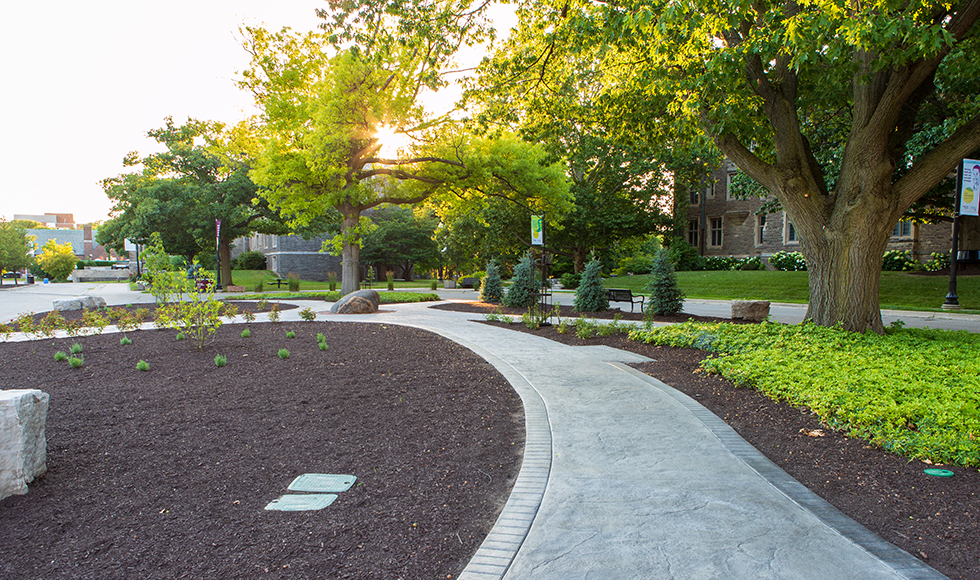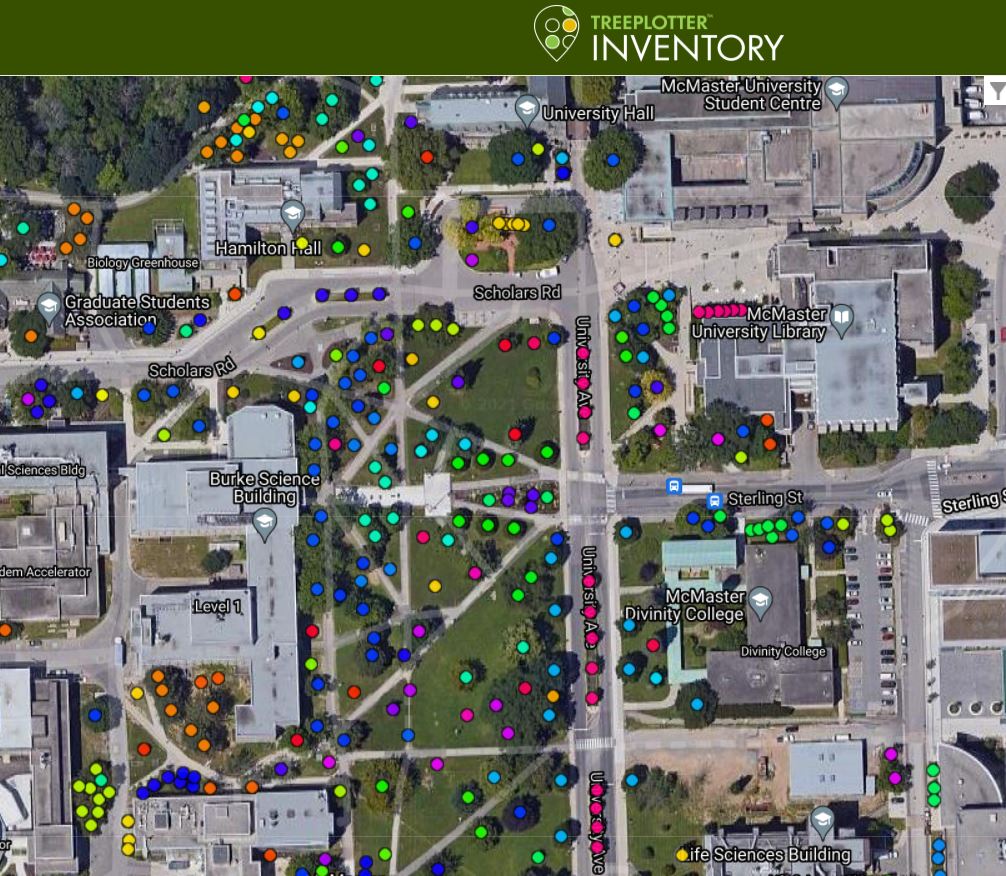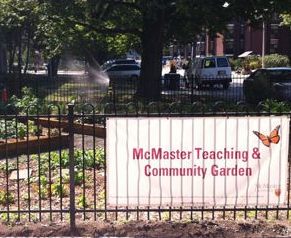Information Box Group

Bird Strike Prevention Learn More About Bird Window Collisions
Collision with windows is a major threat to bird populations, and is particularly likely to occur around buildings near large natural areas, such as the McMaster University campus. McMaster has begun to take action to reduce the threat of bird window collisions on campus by adding bird strike film (which helps birds recognize windows as obstacles) to the north side and stairwells of Les Prince Hall and the catwalks between Michael DeGroote Centre for Learning and Discovery (MDCL) and the Life Sciences Building.

Campus Outdoor Spaces
The McMaster University Campus contains about 5,000 trees, excluding woodland property, which means that there are about 0.004 trees per square metres! However, there is always room to improve. McMaster hopes to increase and improve upon the existing amount of green space. Our grounds are renowned for their excellence in horticultural displays, which is a favourite attribute mentioned by summer conference visitors. McMaster is truly a year round campus jewel. McMaster Campus also contains numerous outdoor spaces that provide areas to study, exercise, and relax in. These green spaces can contribute to creativity, motivation, and well-being and can also benefit local ecology. Some of these outdoor spaces include Miller’s Grove, Faculty Hollow, and the Adam Chiaravalle Native Bee Nesting Garden.

Tree Inventory Project McMaster Tree Inventory Map
McMaster Facility Services has created a map of trees on campus, providing an opportunity to learn more about the different trees that grow on campus!

McMaster Teaching and Community Garden
The garden is located on the north side of the General Science Building (GSB) across from the Refectory and Bridges Café. The design features two raised planting beds, two street level beds, and permeable paving pathways. The garden is next to the GSB outdoor classroom, allowing it to be used as a working “lab” by faculty and students.
The McMaster Teaching & Community Garden is a University sustainability initiative with the objective of facilitating local food production while providing teaching and learning opportunities and engaging the McMaster and greater Hamilton community. The MTCG is the product of collaboration between McMaster’s Integrated Science (iSci) Program and the Office of Sustainability. The ongoing success of the MTCG is a result of the outstanding contributions from countless students, faculty, staff, and members of the broader community who have supported its growth and development.
Sourced from https://facilities.mcmaster.ca/services/sustainability/green-space/
